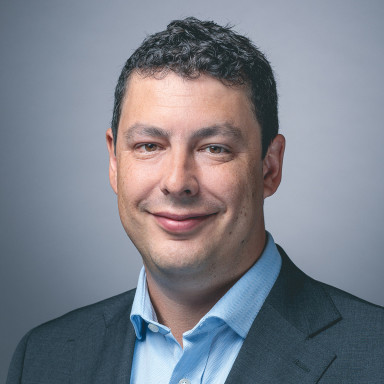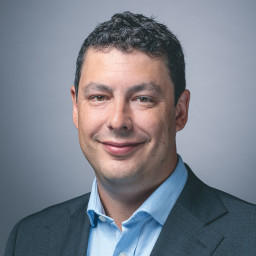The managers invest flexibly, in all types of bonds, with very few constraints placed on them
Invesco has a strong reputation for fixed income investing and follows a disciplined investment process
We think the managers have the ability to interpret the economic picture and position the fund accordingly
The fund is on our Wealth Shortlist of funds chosen by our analysts for their long-term performance potential
How it fits in a portfolio
The managers hope to provide some income and capital growth over the long term, while trying to keep losses during periods of market stress to a minimum. The fund isn’t as income-focused as some bond funds, with the overall return a higher priority.
We think this is a great option to diversify an investment portfolio focused on shares and could bring some stability to a more adventurously invested portfolio.
The managers can invest in high-yield bonds and use derivatives, both of which add risk.
Manager
The fund is co-managed by Stuart Edwards and Julien Eberhardt who took over running it in August 2020 and 2021 respectively. Despite their relatively short tenure on this fund, both managers have been part of the fixed income team at Invesco for well over a decade and have contributed investment ideas for a number of years.
Edwards began his investment career in 1997 at Standard & Poor’s as an economist before joining Invesco in 2003 as a fixed income specialist. He specialises in the analysis of macro-economic data and trends and has been a fund manager for the last 13 years.
Eberhardt began his investment career in 2005 at Moody's as an analyst specialising in high yield and investment grade corporate issuers. He then joined Invesco in 2008 as a fixed income credit analyst, specialising in the analysis of financials. He has been a fund manager for the last eight years.
Edwards and Eberhardt are supported by a well resourced fixed income team, who help to generate ideas for the fund and provide expertise in some of the more specialist areas of bond investing. For example, Senior Portfolio Strategist Jack Parker works closely with the managers around how derivatives are used in the fund. We like that the managers make use of the knowledge and experience of the wider team.
Each co-manager has a number of other fund management responsibilities, but we’re satisfied that there is appropriate overlap, applicable experience, and they have the support of a strong fixed income team. There is relevant analytical crossover between some of these other responsibilities, most notably with Edward’s management of the Invesco Global Bond fund. Edwards leads on formulating wider economic views and the way the fund’s invested off the back of this, while Eberhardt contributes more to credit selection.
Process
The managers combine their analysis of the economy and individual bonds to shape the fund. They can invest in all types of bonds, with few constraints placed on them so the fund is invested in whichever parts of the market the managers think offer the best value. They aim to shelter the fund when they see tough times ahead by increasing exposure to cash and government bonds and seek stronger returns as more opportunities become available. This means the performance of the fund relies on the managers' ability to interpret the bigger economic picture and their success in altering the fund's investments based on what they see.
During 2023, the managers increased their investments in government bonds from 17.5% at the end of 2022 to 34.9% at the end of 2023. They also reduced investments in corporate high yield bonds (those that are deemed most risky and have the highest potential to default on their bond payments). 6% of the fund was invested in high yield corporate bonds at the end of 2022 and now it has no exposure. They also reduced the amount invested in some of the more risky bonds issued by banks, reducing this exposure from 20.8% to 15% over the period.
The team were active in managing their duration positioning across 2023. Duration is measured in years and reflects how sensitive the fund is to interest rate changes. The higher the duration value (number of years), the more sensitive the fund is to interest rate changes. The managers started the year with a duration of 3.3 years, gradually increased this to a high of 7.8 years before reducing this again towards the end of 2023 to 5 years.
It is good to see the full flexibility of the fund continuing to be used by Edwards and Eberhardt. The willingness to invest differently to peers is expected to continue, meaning performance could be different too.
Culture
The fixed interest team at Invesco has a strong reputation and follow a clear and disciplined investment process, aiming to achieve the best returns for investors. The managers are incentivised based on the performance of the fund which we think aligns their interests with those of investors.
ESG Integration
The managers consider ESG (Environmental, Social and Governance) factors when analysing bonds as they believe that over the long term these factors can affect the creditworthiness of bond issuers. This doesn’t mean that the managers won’t take ESG related risks within the fund though, they just need to be rewarded appropriately for the associated risks. They will also engage with company management in instances where ESG risk is material for bondholders.
While the approach to ESG integration differs between investment teams at Invesco, all teams are supported by a centralised team of ESG professionals, located in three regions: the US, Asia and EMEA. The Global ESG team is responsible for implementing best practice across the firm including ESG integration, research, voting and engagement, supporting the distribution team with client engagement, and advising the product teams on ESG innovation. Invesco also has dedicated ESG specialists within certain individual investment teams, who are closely connected with the Global ESG team.
Fund managers use insights from a wide range of third-party research and service providers and have access to Invesco’s proprietary ratings tool, ESGintel, which provides data and insights on a large number of companies across the globe.
The firm’s ESG approach, engagement case studies and headline voting records are all available in the annual ESG Investment Stewardship report. They also offer a voting dashboard which allows a user to view how each fund voted on each resolution. However, no voting rationale is provided.
Cost
This fund has an ongoing annual charge of 0.70%, but we've secured HL clients an ongoing saving of 0.25%. This means you pay a net ongoing charge of 0.45%. The fund discount is achieved in the form of a loyalty bonus, which could be subject to tax if held outside of an ISA or SIPP. The HL platform fee of up to 0.45% per year also applies.
Performance
Since Edwards became co-manager of the fund in August 2020, the fund has delivered a return of 7.67%* to investors, ahead of the peer group average return of 0.07%. Although this is an encouraging start on this fund, it should be noted that this is a relatively short timeframe to assess performance. Past performance isn’t a guide to the future.
Over the last year the fund has underperformed the wider peer group, returning 6.46% compared to the peer group average return of 8.09%. 2023 was a volatile time in bond markets, with many ups and downs over the year. The main reason for this was changes in interest rates, as well as investor expectations for future levels of interest rates. At the same time, there was a widely held view that many economies would enter recession in 2023, as a direct result of interest rate increases. In the end, there wasn’t a recession, which meant that some parts of the bond market did better than the team expected.
The fund’s duration position added positively to returns over the year, as did investments in corporate bonds. Even though the corporate bonds added value, the fund had less invested in them compared to many of its peers and so didn’t benefit from their performance as much as some other funds.
We think the managers have the potential to reward those who are prepared to take a long-term approach. There's no guarantees though. We continue to expect the fund to lag a rising bond market but think it has the potential to hold up better when the market is falling.
At the end of December 2023, the fund had a distribution yield of 3.61%, although yields are variable and aren’t a reliable indicator of future income.
Annual percentage growth
Dec 18 - Dec 19 | Dec 19 - Dec 20 | Dec 20 - Dec 21 | Dec 21 - Dec 22 | Dec 22 - Dec 23 | |
|---|---|---|---|---|---|
IA £ Strategic Bond | 9.28% | 6.05% | 1.02% | -11.73% | 8.09% |
4.59% | 12.93% | 1.59% | -4.64% | 6.46% |

